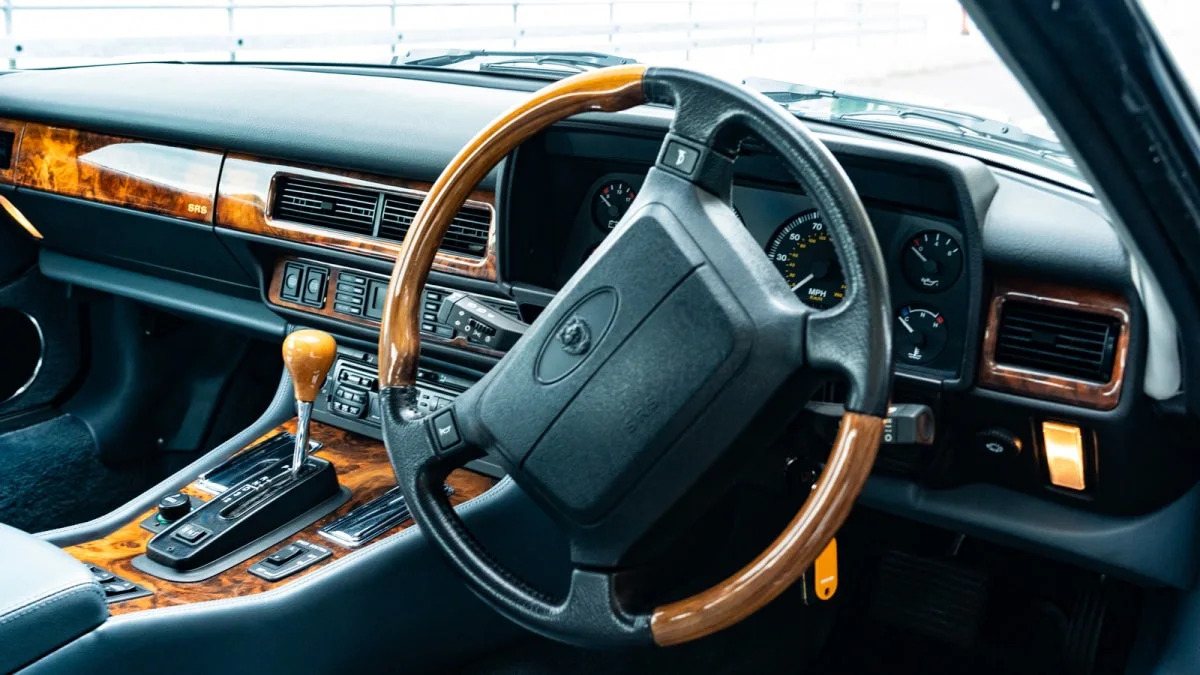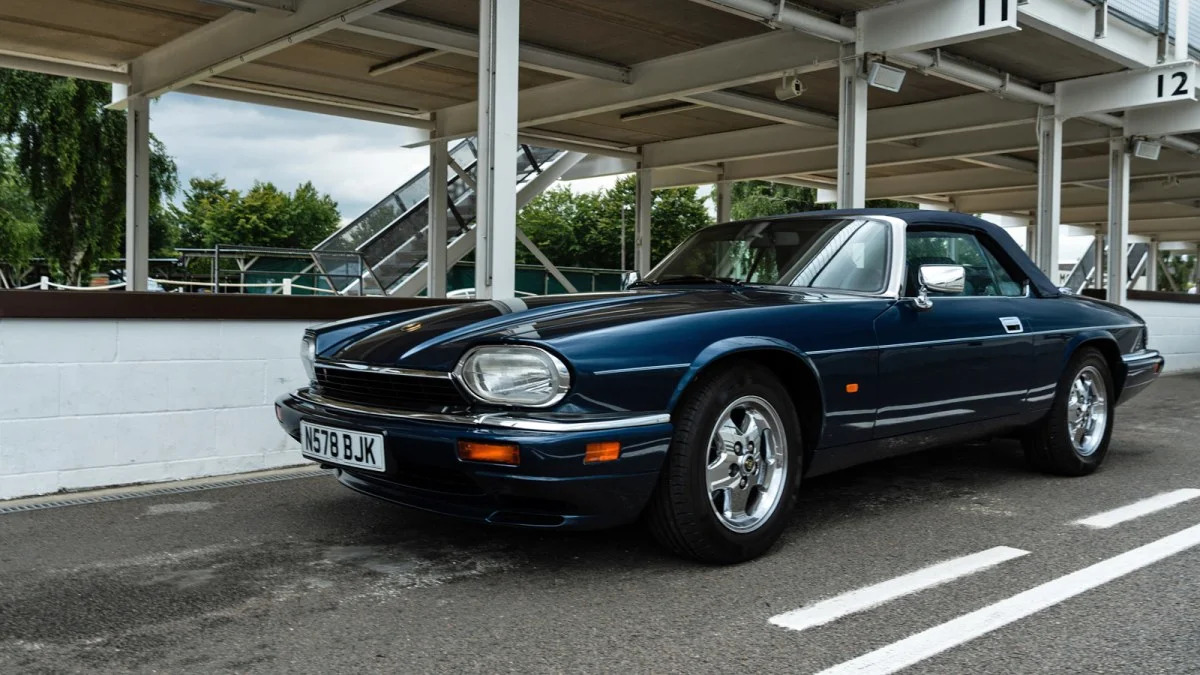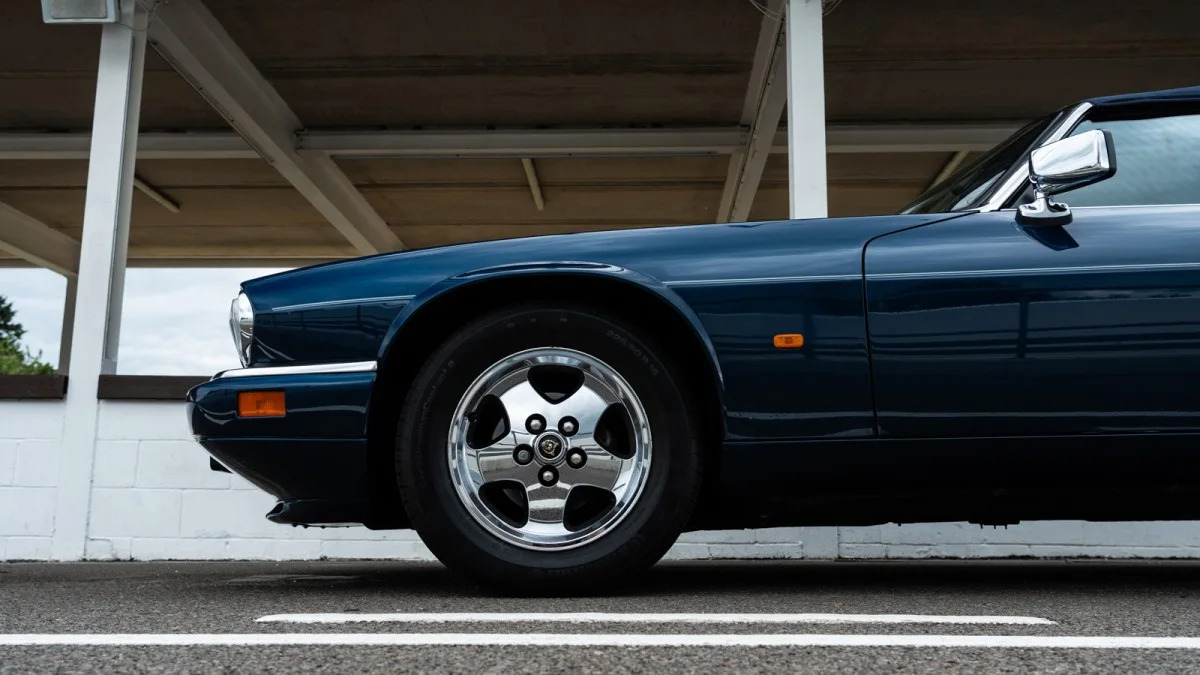1996 Jaguar XJS Convertible Retro Review: Fancy a good waft 'round Goodwood?

CHICHESTER, England – Everything seems like it’s moving faster these days than it used to. Whether it be trendy memes or systems of government, what was popular yesterday doesn’t stand a chance today. That’s true of cars, too. Every major model is expected to have a refresh every couple of years followed by a complete reboot after five or six.
In that context, the 21-year staying power of the Jaguar XJS is nothing short of remarkable, especially if you look at the decades it spanned.
Introduced in 1975, the XJS (or XJ-S as it was initially known) survived all the way into 1996 before finally running out of its nine lives, all with such subtle visual tweaks that you have to be a bit of an expert to spot the differences introduced over the three decades it covered.
The 1996 model you see here is as new as it gets, yet it still very much looks, feels, and even smells like a much older machine — albeit with some curious injections of technology here and there to spoil the air of nostalgia.
This one is a British-market 4.0-liter inline-six-cylinder model with 242 horsepower and 289 pound-feet of torque sent through what must be the laziest transmission I’ve ever encountered, a four-speed ZF automatic. But relaxed, as it turned out, would be the overriding vibe of this car, something I actually came to appreciate before my time with this beautifully preserved example was through.
We didn’t get off to a great start. My test drive took place on the historic Goodwood Circuit, best known for the high-class hooning of the annual Goodwood Revival.
I would not do any drifting, nor crashing thank goodness, but the on-track nature of my run did mean I needed to wear a helmet. That proved to be a bit of a problem.
I’m not a particularly lanky 6-foot tall, and the XJS is not a small car, so without overthinking it, I tucked my way in, ducking beneath the low roof of this XJS cabriolet. I expected that, once inside, I could adjust the seat and get myself situated.
Whoever had driven this previously was apparently quite a bit shorter of stature because the seat was bolt upright and tight to the wood-rimmed steering wheel. Now properly trapped and in a bit of a panic, I stabbed at the chunky, plastic seat controls on the door only to quickly learn the seats won’t move without the ignition on. My knee was wedged so tightly up against the steering column that I couldn’t reach the ignition.
After a few attempts, I got the key turned and the seat in motion. Further and further back I had to recline the thing before I could finally uncoil my neck. It’s a Corvette-like posture I had to assume here, knees akimbo and arms outstretched.

My newly laid-back seating position seemed to fit with the aforementioned vibe of the car, and now somewhat comfortable, I took a moment to enjoy the time capsule. It makes a good impression, the XJS. Beautifully polished walnut abounds, including the ball atop the spindly tall shifter that you’d be forgiven for mistaking for a manual.
That lovely wood, however, is punctuated by all manner of things, a few of which ruin the mood. There’s the polished metal ashtray, a lovely touch reminiscent of many high-end ’60s GT cars, like the Lamborghini 400 GT. It’s a lovely relic from the early days of this car’s design that sits just a few inches away from less enjoyable relics: a clumsy black plastic cassette deck and digital clock.
The XJS, then, doesn’t give the time capsule effect so much as it provides a retrospective of three decades worth of motoring highlights and lowlights.
The XJS is, of course, most famous for its V12. Alas, I drove the lesser 4.0-liter inline six-cylinder, which runs so quietly I couldn’t tell when I should let off the starter. It didn’t honestly get much louder as I pulled out onto the Goodwood Circuit and began to wind everything up to speed.
Goodwood is a generally simple track but a beautifully flowing one, mostly a series of multi-apex right-handers perfectly designed for machines with simple suspension and rudimentary brakes. These are descriptors that can certainly be applied to the XJS.

Turn that lacquered steering wheel to enter a corner, and there’s a good moment or two where nothing at all happens. Be patient, though, and the long nose eventually begins its journey toward the inside of the turn. An instant later, the outside door of the car initiates its own trip down towards the asphalt.
Again, “relaxed” is the way to describe it, with the XJS leaning and meandering through the turns without much in the way of hurry or feedback. The brake pedal likewise has a long throw to it, and you’d best get used to exploring every degree of it if you want to bring this big cabriolet down to a reasonable speed before turn-in.
At first I couldn’t help laughing at how unsuited the car felt at speed, but after a lap I started getting comfortable. Again, thanks to the flowing nature of this track, the flowing nature of the XJS was quite enjoyable. The challenge was to pick a given amount of steering input early into one corner and hold it all the way through the apexes so as not to upset the suspension.
Holding a consistent, steady line is the way, and when following a gentle gliding arc like that, the XJS is surprisingly fun. Then, once I learned to get the throttle buried to the floor a good few seconds before the apex, I started to enjoy the inline-six a bit, too.
When it finally works its way towards the upper end of its 5,700-rpm tachometer, it offers decent shove and a nice sound, too. I could just hear the engine over the wind noise, though, which, despite keeping the roof up, was louder than many modern convertibles I’ve driven with the top down.
So, not ideal for a technical track (but who’s bringing an XJS to one of those?), and that relaxed transmission and power delivery likewise will leave you a bit frustrated if you’re the sort who gets impatient running between traffic lights. But on a wide, flowing road with lots of miles ahead of you, I could see the XJS being a genuinely rewarding ride.

A little buyer’s advice
Looking to bring an XJS into your life? The good news is you’ve got 21 years’ worth of cars to choose from. But you’re most likely to find a cleanest example among the later generation, like you see here, which ran from 1991 to 1996.
There are two engines to choose from: the 4.0-liter inline six driven here and the V12, which evolved from 5.3 to 6.0 liters. Which one is for you? That depends on whether you want to maximize reliability or number of moving pieces. Regardless, don’t imagine that you’re getting yourself a hot rod even if you go with the bigger motor. At its peak, that V12 made just over 300 horsepower, about 60 more than the inline-six. These days, neither is going to feel like a rocket ship.
Per Hagerty, a 1996 inline-six convertible like you see here is worth $15,500 in good condition. Want a V12? You’re looking at $18,000 in the same condition. Just make sure to budget a little extra for maintenance. As ever, it helps if you’re handy yourself, as issues with the car’s electrical system, rear suspension and fuel system are common, and your friendly local mechanic will surely roll out their premium rates when they see you cruise up in one of these.

